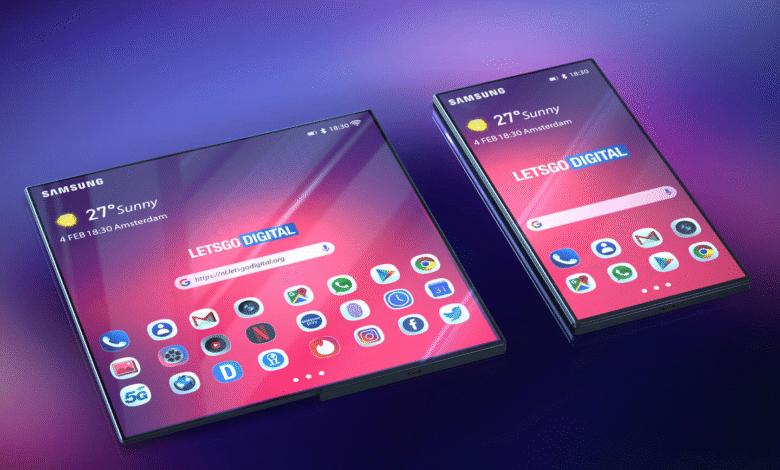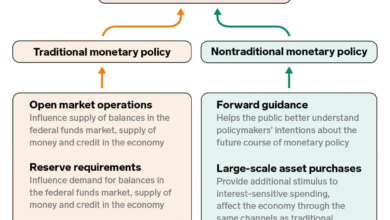Samsung Foldable Phones Surging in Market Share Over Apple

Samsung foldable phones are reshaping the mobile market, compelling consumers to reconsider their technology preferences. With the recent launch of the Samsung Z Fold 7, which seamlessly transitions between a smartphone and a tablet, the allure of foldable smartphone technology has never been more palpable. As Samsung’s market share continues to rise, contrasting the notable Apple market share decline, industry analysts highlight a pivotal shift in consumer electronics trends. The intriguing design and functionality of these devices have sparked a surge in social media buzz, with 83% of discussions reflecting positive sentiments. In the competitive arena of Samsung vs Apple, it’s evident that foldable phones are not just a passing trend but represent a significant leap forward in mobile innovation.
The advent of foldable mobile devices has triggered a transformative wave in the smartphone landscape, compelling tech enthusiasts to explore cutting-edge alternatives. Samsung’s latest contributions to this burgeoning niche, particularly with models like the Galaxy Z Fold 7 and the Z Flip, exemplify their innovative spirit amidst a shifting market. As Apple grapples with the repercussions of a diminishing grip on market share, the evolving focus on versatile and multifunctional devices underlines the rising consumer demand for advanced smartphone options. This shift is not only reflective of changing consumer preferences but also highlights the accelerating development of advanced features in the realm of mobile technology. As the competition heats up, the race for dominance in the foldable sector is set to redefine what users expect from their devices.
The Rise of Samsung Foldable Phones in the Market
Samsung’s foray into the foldable smartphone market marks a significant pivot in the consumer electronics landscape. With models like the Samsung Z Fold 7 and the Z Flip leading the charge, Samsung is redefining how users perceive functionality and innovation in mobile devices. The push towards foldable technology not only appeals to tech enthusiasts but also attracts everyday consumers looking for devices that can multitask. This adaptability allows Samsung to cater to a broader audience compared to Apple’s more traditional offerings, signifying a major transformation in market dynamics.
The impact of Samsung’s foldable phones on the market share is evident, as the company’s shipment growth indicates heightened consumer demand for these innovative devices. More compelling is the feedback from users and social media conversations, where a staggering 83% of mentions regarding the foldable devices are positive. This demonstrates not only a successful product design but also the clever marketing strategies Samsung has employed to position its foldable phones as desirable alternatives to Apple’s iPhone.
Apple’s Market Share Decline: A Response to Samsung?
Apple’s recent decline in market share from 56% to 49% signals a critical moment for the tech giant, especially as Samsung’s popularity among consumers rises due to its competitive pricing and innovative technologies. While Apple traditionally dominated the market with its consistent design ethos and loyal customer base, the pressure is mounting as foldable smartphone technology evolves and gains acceptance. Investors and analysts alike are turning their eyes toward Apple’s next steps—will it innovate in response to Samsung’s success or risk losing its footing in the highly competitive market?
The decline in Apple shares, juxtaposed with Samsung’s impressive stock performance, indicates that the landscape is shifting. Analysts predict that Apple might respond with new designs, including speculation around a foldable iPhone by 2026. However, with Samsung openly challenging Apple with continuous innovation and expanded offerings, the pathway for Apple could be more complicated. The consumer electronics trends suggest that Apple must act decisively to maintain its competitiveness, especially in an era where consumer preferences are leaning towards versatility in devices.
Consumer Electronics Trends: Evolving Preferences
As consumer preferences evolve, the trends within the consumer electronics space are increasingly leaning towards innovation and versatility. The rise of foldable smartphones is a testament to this transition, as users express a desire for devices that not only meet traditional usage but also adapt to new lifestyles. Samsung’s introduction of the Z Fold 7 demonstrates this shift, as it functions both as a phone and a tablet, fulfilling multiple roles—a quality that consumers are actively seeking in today’s gadgets.
Furthermore, the ability of foldable smartphones to integrate advanced technologies, such as AI, resonates with a tech-savvy audience eager for interactive and responsive devices. This trend towards greater usability reflects a broader consumer electronics shift. Samsung, by investing in foldable technology, positions itself at the forefront of this trend, challenging the status quo and inviting consumers to reassess their loyalty to brands like Apple, which has remained relatively stagnant in its design approach.
Samsung vs Apple: The Heated Competition
The ongoing competition between Samsung and Apple highlights a critical battle in the tech industry, one that is now taking on new dimensions with the rise of foldable smartphone technology. Samsung’s recent gains in the market underscore how rapidly things can change; the company’s ability to innovate and meet consumer demands is increasingly being recognized. Meanwhile, Apple’s once-unassailable position is being challenged not just by Samsung’s products but by the shifting preferences of consumers who are gravitating towards more innovative and versatile smartphones.
The stakes are higher than ever as both giants fight for consumer mindshare. Samsung’s impressive lineup of foldable devices, including the Z Flip and Z Fold 7, suggests a new wave of smartphones is gaining traction, whereas Apple’s traditional approach might be stifling its growth potential. As both companies mold their strategies to navigate the evolving market landscape, it remains to be seen how much longer Apple can maintain its lead amidst Samsung’s aggressive innovations and the growing allure of foldable technology.
The Future of Foldable Smartphone Technology
The future of foldable smartphone technology appears promising, with advancements hinting at a new era in mobile devices. As Samsung continues to refine its foldable offerings, industry experts view its Z Fold 7 as a cornerstone for future innovations. Improved durability features and user-centric designs are setting the bar higher for what consumers expect from their devices. With customer engagement soaring, it is evident that foldable smartphones are not just a passing trend but a significant evolution in the realm of consumer electronics.
Looking ahead, the integration of emerging technologies, especially AI, will redefine what foldable phones can achieve. As companies like Samsung lead the charge, competitors like Apple may have to shift their strategies to include unique designs and enhanced capabilities to capture the attention of an increasingly discerning consumer base. The dynamics of foldable smartphone technology will likely shape the future of the entire industry as companies navigate through their innovation roadmaps.
The Impact of Tariffs on Consumer Electronics
The global trade landscape has also played a critical role in shaping the consumer electronics market, particularly with respect to tariffs. These economic factors can directly influence pricing strategies for companies like Samsung and Apple, often impacting how they position their products in market segments. Samsung’s diverse product range caters to various price points, making it relatively resilient against fluctuating tariffs, while Apple’s premium pricing strategy may leave it vulnerable in times of economic uncertainty.
As tariffs continue to evolve, both companies must adapt their strategies to maintain consumer interest. Samsung’s flexibility with including entry-level models in their product line exemplifies an effective response to market pressures, allowing them to capture a broader audience. Conversely, Apple may need to reconsider its pricing models if it hopes to retain market share amid rising competition from innovative products like Samsung’s foldable phones.
Consumer Outlook on Foldable Devices
Consumer sentiment typically drives market trends, so understanding how the audience perceives foldable devices is crucial for both Samsung and Apple. Early adopters of foldable phones express excitement about their versatility, functionality, and state-of-the-art technology, which could influence broader consumer adoption. With significant buzz surrounding the Samsung Z Fold 7 and Z Flip, this enthusiasm underscores a growing acceptance of foldable technology as a viable option for daily use.
However, consumer apprehension remains concerning durability and practicality. Samsung’s advancements in addressing past concerns about foldable phone durability signal a proactive approach aimed at overcoming skepticism. For Apple to remain relevant, it must not only monitor these consumer sentiments but also innovate accordingly, potentially paving the way for its own foldable device in the coming years to compete effectively in this evolving market.
Innovations Driving Forward the Foldable Smartphone Segment
Innovation has always been at the heart of the consumer electronics industry, and foldable smartphones are no exception. Samsung is currently at the forefront of this segment, showcasing its commitment with flagship devices like the Z Fold 7, which exemplify cutting-edge engineering and user experience design. The continual enhancements in foldable technology highlight a critical shift in how smartphones operate, with potential applications that extend beyond mere consumer devices.
The focus on innovation goes hand in hand with the exploration of new materials and advanced display technology, which can influence future smartphone designs significantly. As more manufacturers enter the foldable smartphone space, competition will likely spur further advancements, giving consumers more choices and features. Observing how Samsung navigates this innovative landscape could provide insights for Apple, as the latter seeks to reclaim its market leadership amidst rising challenges.
Anticipating Apple’s Response to Foldable Trends
As the tide shifts in the smartphone market, the anticipation surrounding Apple’s response to the burgeoning foldable trend intensifies. Given the company’s historical reluctance to adopt groundbreaking technologies, there is a growing expectation that Apple will eventually unveil its own foldable device to maintain competitiveness. Recent speculation suggests that upcoming iPhone designs might incorporate innovative features, positioning Apple to regain its market appeal in an evolving consumer landscape.
However, with Samsung’s increasing influence and consumer interest in foldable technology, the pressure is mounting for Apple to innovate significantly. Analysts predict that Apple will not only need to consider physical designs but also enhanced functionalities to meet evolving consumer expectations. The coming years will be pivotal for both companies, as they aim to capture the imaginations of consumers who are increasingly leaning towards devices that offer versatility and innovation.
Frequently Asked Questions
What are the advantages of Samsung foldable phones compared to traditional smartphones?
Samsung foldable phones, such as the Z Fold 7, offer unique advantages like multi-tasking capabilities, larger displays that resemble tablets, and innovative designs that enhance user experience. As foldable smartphone technology evolves, these devices cater to consumers looking for versatility and a premium feel.
How has Samsung’s market share changed in relation to foldable phones?
Samsung’s market share in the U.S. has significantly increased, rising from 23% to 31% as a result of the popularity of foldable phones, particularly the Z Fold 7 and Z Flip. This shift indicates that consumer electronics trends are favoring innovative devices over traditional options, with Apple experiencing a decline from 56% to 49%.
What features does the Samsung Z Fold 7 offer to users?
The Samsung Z Fold 7 features a large, vibrant display that functions both as a smartphone and a tablet. It supports multi-tasking, allowing users to run multiple applications simultaneously, enhancing productivity. The foldable smartphone technology used in the Z Fold 7 ensures better portability without compromising on screen size.
How do Samsung’s foldable phones impact the competition with Apple?
Samsung’s foldable phones are reshaping the competitive landscape against Apple. With Samsung’s innovative approaches and increased market presence, analysts predict that Apple will need to respond with new product designs, including a possible foldable iPhone by 2026. The rise of Samsung in this segment indicates a shift in consumer preferences towards cutting-edge technology.
What are consumers saying about Samsung’s foldable smartphones, like the Z Flip?
Social media engagement for Samsung’s foldable smartphones is overwhelmingly positive, with 83% of mentions being favorable. Consumers appreciate the innovative designs and functionality offered by the Z Flip and Z Fold 7, highlighting their appeal in the evolving foldable phone market.
What improvements have been made to Samsung’s foldable phone durability?
After facing initial durability issues with its first foldable device, Samsung has made significant improvements with the Galaxy Z Fold 7. Enhanced materials and engineering have bolstered its resilience, leading to strong preorder numbers and positive feedback on its reliability.
What trends are influencing the rise of Samsung foldable smartphones?
The rise of Samsung foldable smartphones is influenced by several trends, including the increasing consumer demand for innovative features, broader price ranges catering to diverse markets, and the integration of AI technology in new devices. This trend is challenging traditional brands like Apple, pushing them to evolve.
What is the future outlook for Samsung foldable phones against competitors like Apple?
The future looks promising for Samsung’s foldable phones, particularly as the consumer electronics landscape continues to favor innovation. With Apple facing market share challenges and the potential introduction of a foldable iPhone, it will be crucial for Samsung to maintain its momentum in the evolving market of foldable smartphone technology.
| Key Points | Details |
|---|---|
| Market Share Shift | Samsung’s market share increased from 23% to 31%, while Apple’s declined from 56% to 49%. |
| Stock Performance | Apple shares fell by 7.5% in 2023, whereas Samsung’s stock rose by 35%. |
| Product Innovations | Samsung launched Z Fold 7 and Z Flip with high social media engagement (83% positive mentions). |
| Market Adaptation | Samsung offers a wide range of foldable phones catering to different price points, including entry-level. |
| Competitive Response | Apple may introduce a slimmer iPhone and a foldable iPhone by 2026 due to the competitive pressure. |
| Durability Improvements | The Galaxy Z Fold 7 shows robust preorder numbers, indicating improved durability. |
| Consumer Focus | Consumers are increasingly looking for innovative features as Apple and Samsung adjust their strategies. |
Summary
Samsung foldable phones are transforming the smartphone market and gaining significant traction among consumers. The recent surge in Samsung’s U.S. market share demonstrates a strong pivot towards innovative devices that meet evolving consumer preferences. As Apple faces challenges in maintaining its leadership position, the competition intensifies, particularly in the realm of foldable technology. Samsung’s commitment to enhancing its foldable phone designs and extensive product range is resonating with users, making it essential for Apple to innovate rapidly to adapt to this competitive landscape.




